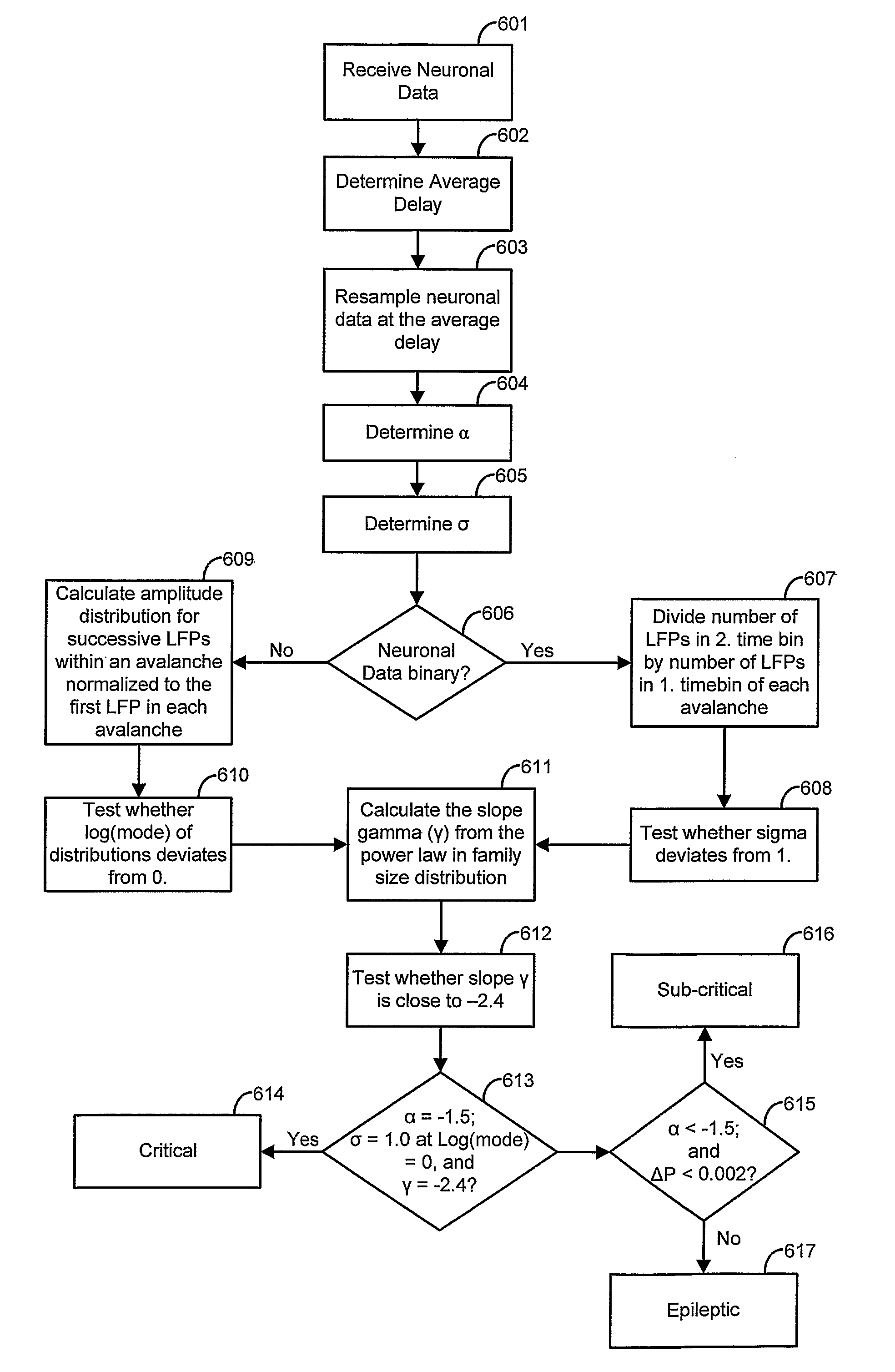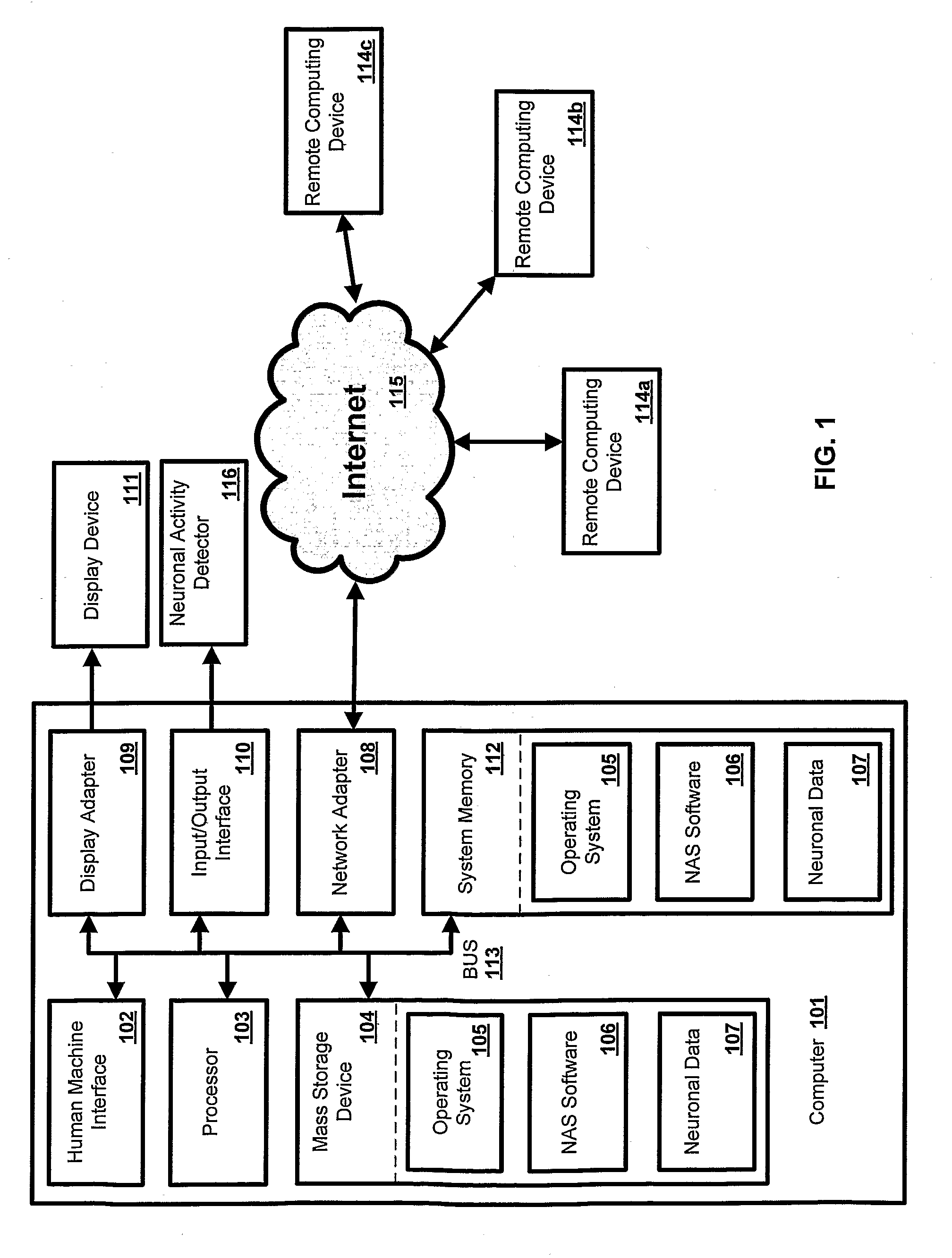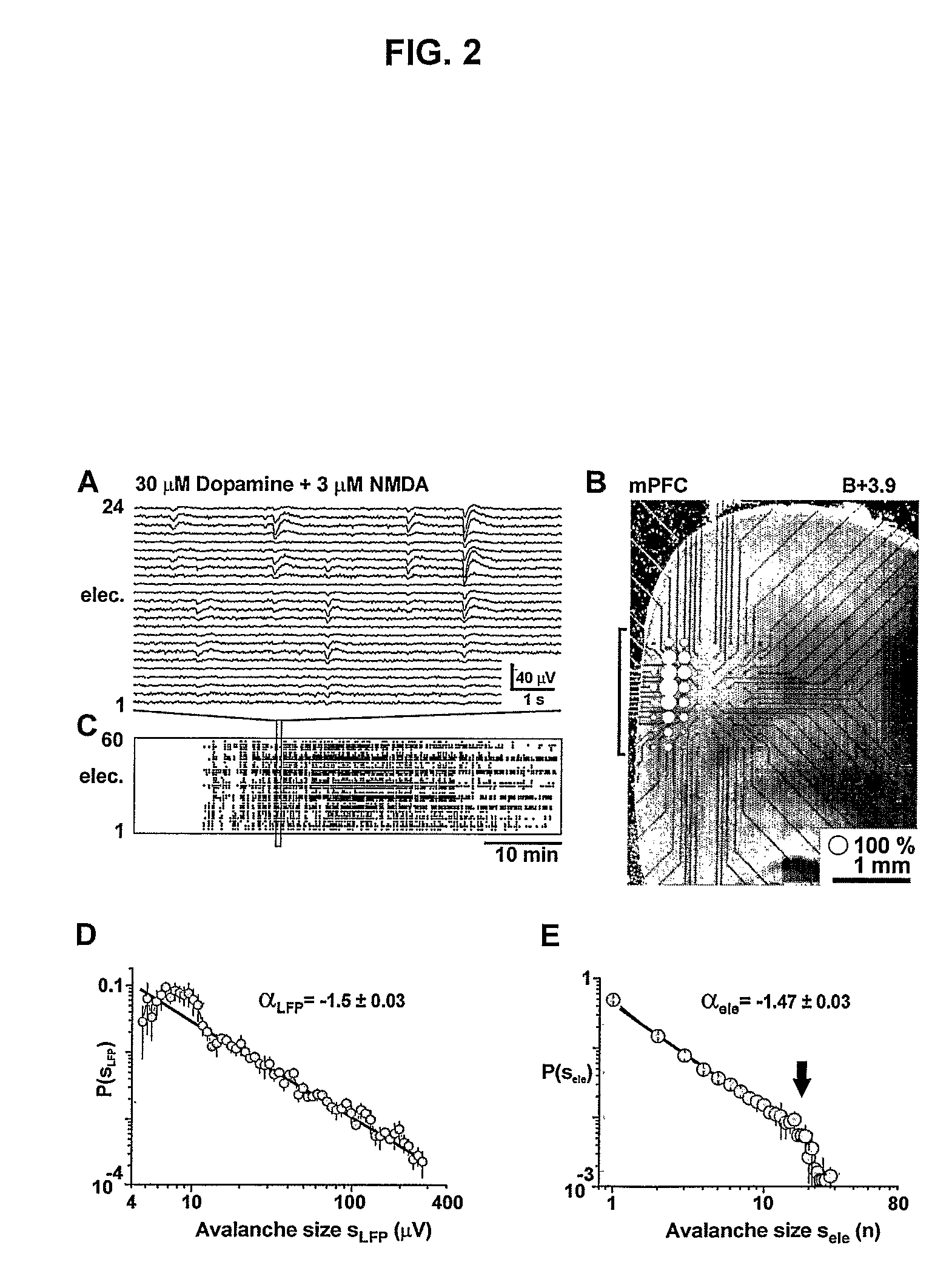Neuronal avalanche assay
a technology of neuronal avalanche and assay, applied in the field of neuronal avalanche assay, can solve the problems of largely limited understanding of the dynamical processes that underlie such fast and selective synchronization, and re-examine the ability of biological cortical networks to stably function
- Summary
- Abstract
- Description
- Claims
- Application Information
AI Technical Summary
Benefits of technology
Problems solved by technology
Method used
Image
Examples
example 1
A. Example 1
[0118]Example 1 demonstrates that dopamine, a neurotransmitter involved in numerous cognitive and behavioural tasks, together with glutamate, the main excitatory neurotransmitter in the cortex, regulate the critical state in superficial layers of cortex.
[0119]i. Moderate Dopamine Receptor Stimulation Maximizes Recurrence and Distance of Spatial Correlations in Neuronal Avalanches.
[0120]Acute coronal slices of medial prefrontal cortex (mPFC) were taken from adult rats and placed on planar microelectrode arrays. Extracellular neuronal activity was recorded simultaneously from superficial and deep layers of mPFC and up to 1.8 mm along layers (FIGS. 2A,B and FIG. 7). While slices were not spontaneously active in normal ACSF, bath-application of dopamine in combination with 3 μM of the glutamate N-Methyl-D-Aspartate (NMDA)-receptor agonist NMDA induced spontaneous extracellular activity that increased over the course of ˜30 min after which the activity slowly tapered off (FIG...
example 2
B. Example 2
[0157]Microelectrode array recordings of ongoing or spontaneous local field potential (LFP) activity in vivo from the primary motor cortex of two awake macaque monkeys sitting quietly in darkness were used (FIG. 13A), and in vitro from rat medial prefrontal and somatosensory cortices using both organotypic slice culture and acute slice preparations (N=6 cultures, 18 slices). The array configurations covered a range of scales, spanning ˜2 mm2 of cortex in vitro and 64 and 36 mm2 of cortex in vivo for each of the two monkeys respectively. FIG. 13B shows a representative segment of an multielectrode array recording from one monkey where the traces at each electrode reflect the LFP activity typical for the awake state. Negative components of the LFP were extracted by peak detection using a threshold at −3 SD. These extracted negative LFPs (nLFPs) were typically composed of a single negative peak, sometimes followed by a positive component (FIG. 13C). For both monkeys, about ...
example 3
C. Example 3
Oscillatory
[0188]The NAS assay can be constructed based on oscillatory activity, i.e. gamma oscillations measured from superficial cortical layers. This allows the use of an Electroencephalogram (EEG) as a neuronal activity detector. Gamma-oscillations are readily revealed in EEG measurements.
[0189]Synchronized neuronal activity at millisecond precision such as γ-oscillations is considered to be important for higher cortical functions such as feature binding, selective attention, and consciousness. γ-band oscillations are found early on during development, e.g. as human infants develop feature-binding capabilities, and their beneficial roles are clearly demonstrated in adults, where γ-frequency power is positively correlated with the difficulty level during working memory tasks. On the other hand, an increase in γ-synchrony has been associated with positive and a decrease with negative symptoms of schizophrenia raising the question whether there is an optimal regime in w...
PUM
| Property | Measurement | Unit |
|---|---|---|
| distance | aaaaa | aaaaa |
| distance | aaaaa | aaaaa |
| propagation velocity | aaaaa | aaaaa |
Abstract
Description
Claims
Application Information
 Login to View More
Login to View More - R&D
- Intellectual Property
- Life Sciences
- Materials
- Tech Scout
- Unparalleled Data Quality
- Higher Quality Content
- 60% Fewer Hallucinations
Browse by: Latest US Patents, China's latest patents, Technical Efficacy Thesaurus, Application Domain, Technology Topic, Popular Technical Reports.
© 2025 PatSnap. All rights reserved.Legal|Privacy policy|Modern Slavery Act Transparency Statement|Sitemap|About US| Contact US: help@patsnap.com



